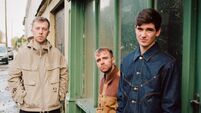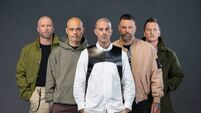Japanese war photographer who documented Ireland's Troubles
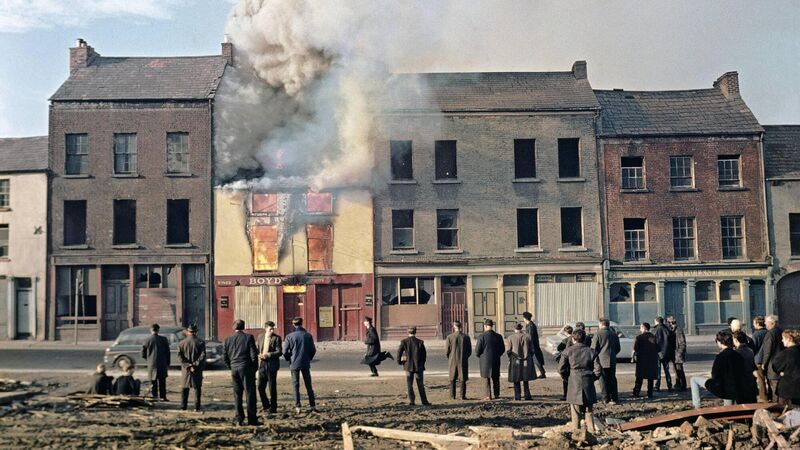
A piece by photographer Akihiko Okamura, exhibited at Photo Museum Ireland
Akihiko Okamura was the Troubles photographer most people had never heard of until these past few weeks, when Photo Museum Ireland announced the world premiere of The Memories of Others — an exhibition of his images at their premises in Temple Bar, Dublin.
Okamura was Japanese, and spent years covering the conflict in Vietnam for magazine and other publications before visiting Ireland for the first time in 1968. A year later, aged 40, he settled here permanently with his second wife, Kakuko.
Okamura’s curiosity about John F Kennedy was what prompted his first visit to Ireland, says art historian Pauline Vermare, who has co-curated the exhibition.
She says: “Very interestingly, Okamura was Catholic, which is very rare in Japan. He began taking photographs of the Vietnam War in 1963, when Kennedy was President of America, and as we know, the Kennedys were Catholic too, so he was curious about their roots in Ireland."
“Following in Kennedy’s footsteps became a very profound and spiritual experience for him. He fell in love with Ireland. In an interview on Japanese television in 1984, the year before he died, he explained that he wanted his children to be Irish. He and Kakuko reared their family of four in County Wicklow, and they all regard themselves as Irish.”
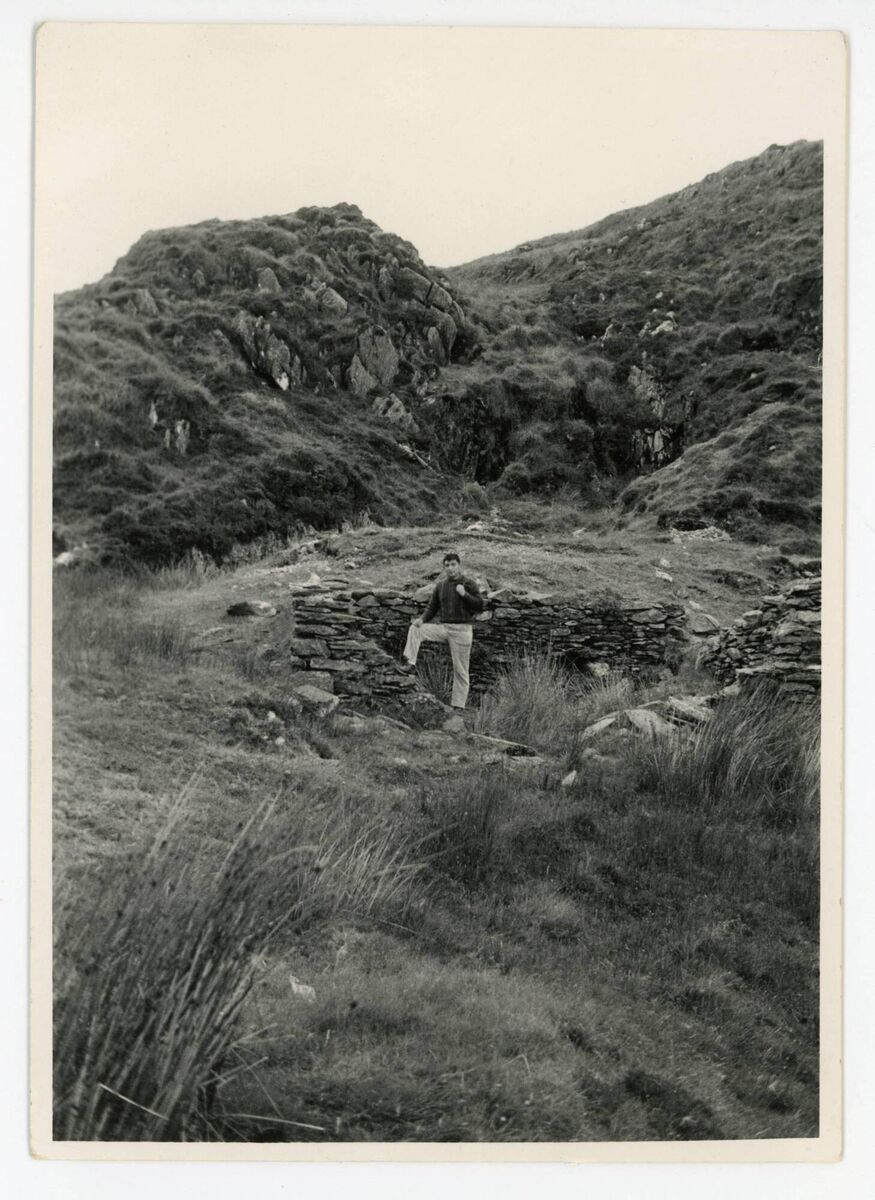
It is not hard to understand Okamura’s attraction to the quiet and peace of County Wicklow; his experiences in Vietnam included being held captive by the Viet Cong for 53 days, and it seems he had also been traumatised by the American air force’s attacks on Japan during World War II.
“He was a teenager when Tokyo was bombed,” says Vermare. “His house was totally destroyed, and after that, he was always mistrustful of power.”
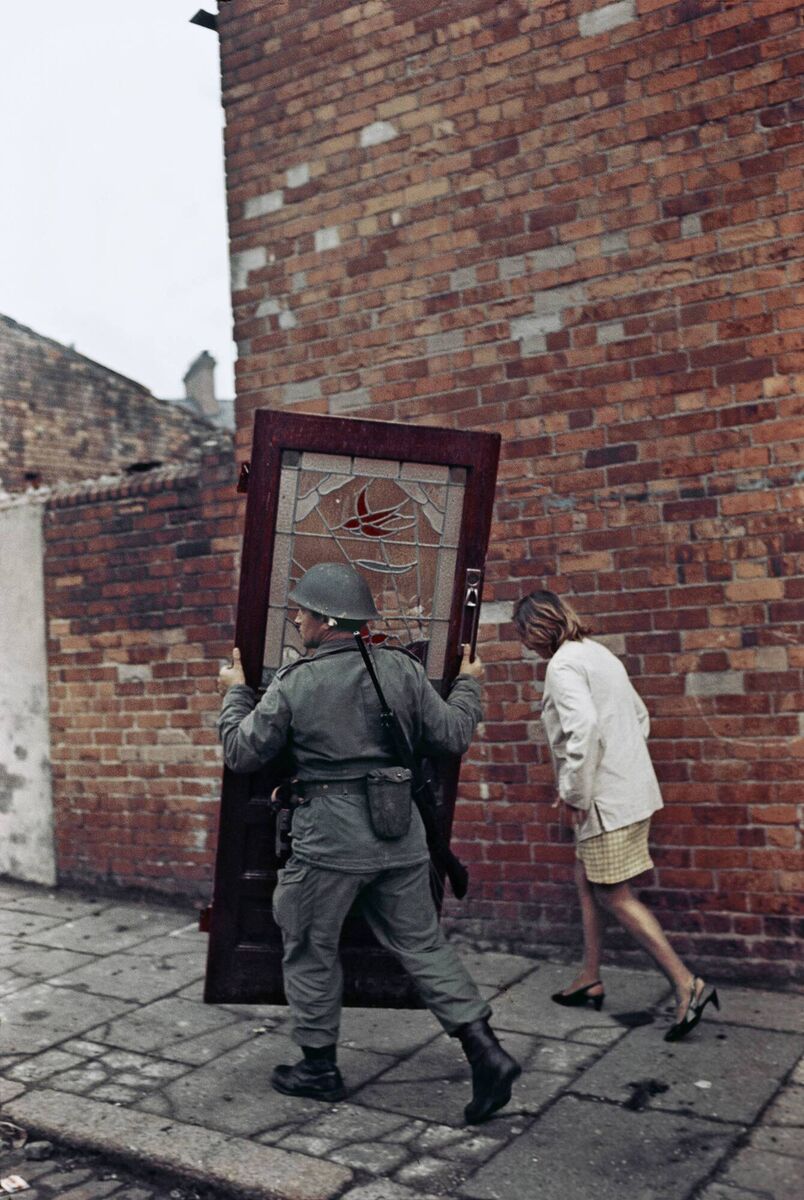
Okamura’s interest in civil rights was what drew him to Northern Ireland. He photographed the Battle of the Bogside in Derry in August 1969, when thousands of Catholics clashed with the RUC and loyalists in an incident that is often regarded as having kickstarted the Troubles: “And after that, throughout the 1970s, he was continually going back and forth from Wicklow. He didn't know how to drive, so his wife would take him to Connolly Station in Dublin. And then he'd take the train to Belfast or Derry.”
The conflict in Northern Ireland inevitably attracted other war photographers, people such as Don McCullin and Gilles Peress, whose black-and-white images captured the terror and tensions on the streets of Belfast and Derry.
Vermare recalls how McCullin has described his work in Northern Ireland: “He said, ‘we were predators, you know, we were looking for the shot'.”
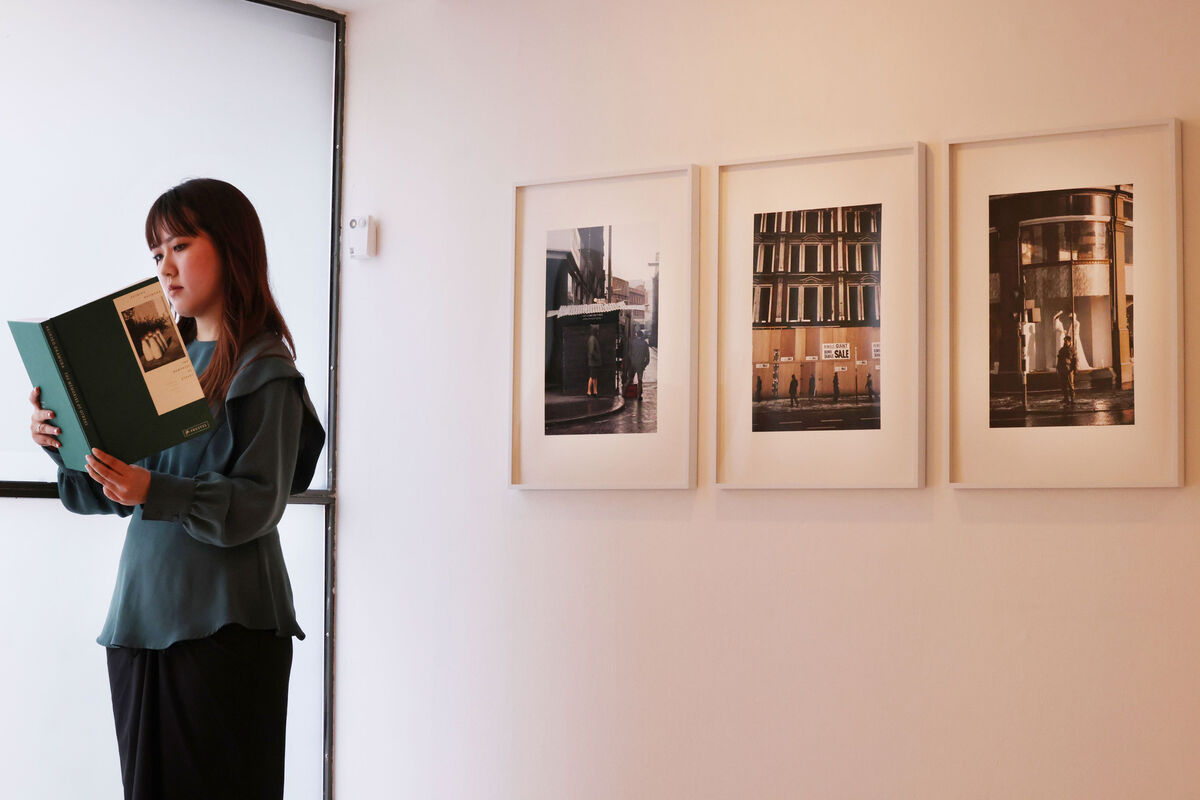
Okamura’s approach could not have been more different. He photographed British soldiers resting under a billboard advertising cigarettes; a lone soldier carrying a woman’s front door to safety after her home was destroyed in an arson attack; a derelict shop burning before a seemingly indifferent crowd of onlookers.
“Trish Lambe, here at the Photo Museum, says Okamura is ‘the photographer of the aftermath'. He was really a thinker, more than anything, an intellectual. He liked to take photos after the fact. He stays, he lingers, he looks at what people are doing.”
In County Wicklow, Okamura loved to fish in the Avoca river, and Vermare sees his approach to photography as involving a similar degree of patience: “He waited for a scene to emerge that would maybe evoke — rather than show — trauma, or death, or grief. His photographs are filled with incredible tenderness, you know.”
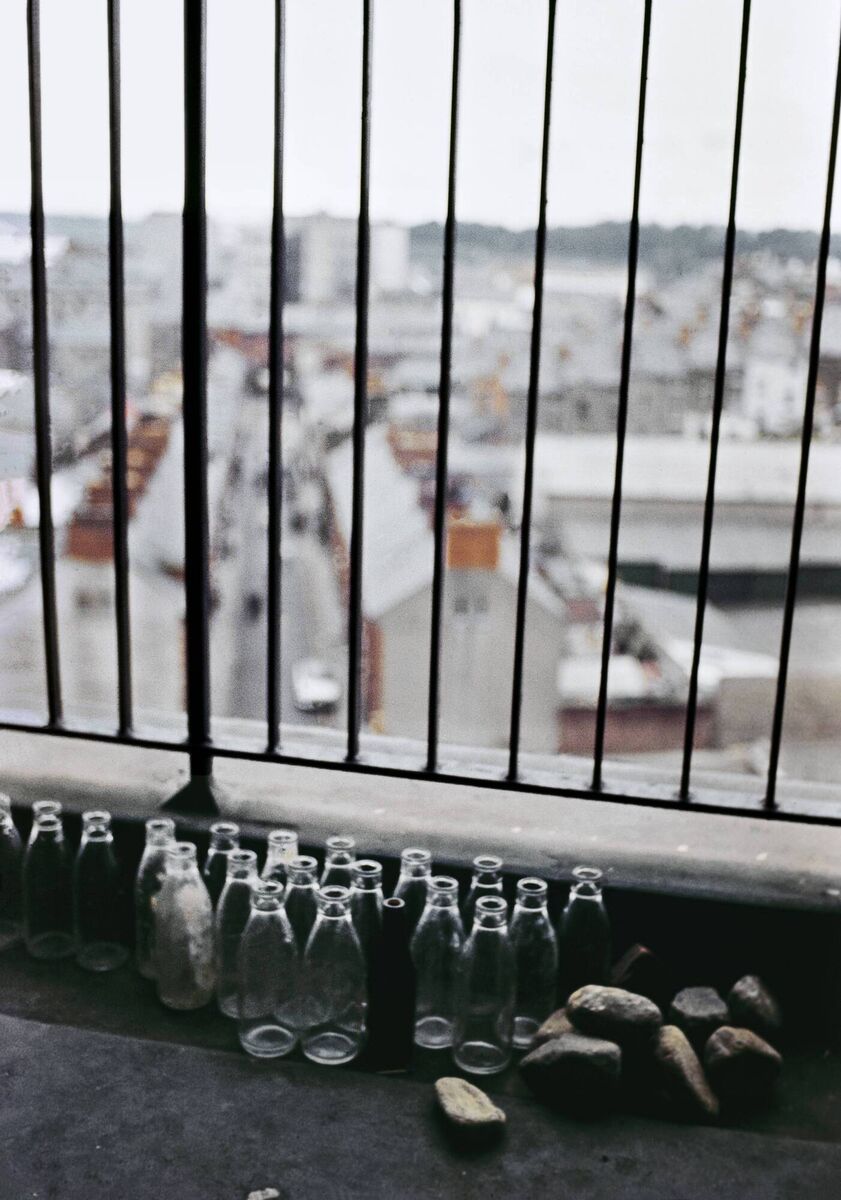
Unusually, Okamura shot in colour. “He was not working to commission,” says Vermare. “He was not trying to publish the work, as others were, and that's really quite remarkable. He's taking these photographs for no other reason than that he's there, and he cares deeply about what's going on. And what's striking about his colours is that they’re so poetic, it's almost like he knew he was making art.”
The catalogue and publicity material for The Memories of Others features Okamura’s image of six milk bottles on a doorstep, which Vermare regards as being “one of the most powerful photographs of the Troubles. The milk bottles are loaded, quite literally loaded, with symbolic meaning". The image hangs in the same room in the Photo Museum as another photograph of empty milk bottles. These, it seems, were about to be filled with petrol and used as Molotov cocktails. “There are rocks lined up beside them, so it looks like they were being prepared to be thrown at the police. Okamura must have known, when he was taking these photographs, that so many metaphors could be read into them.”
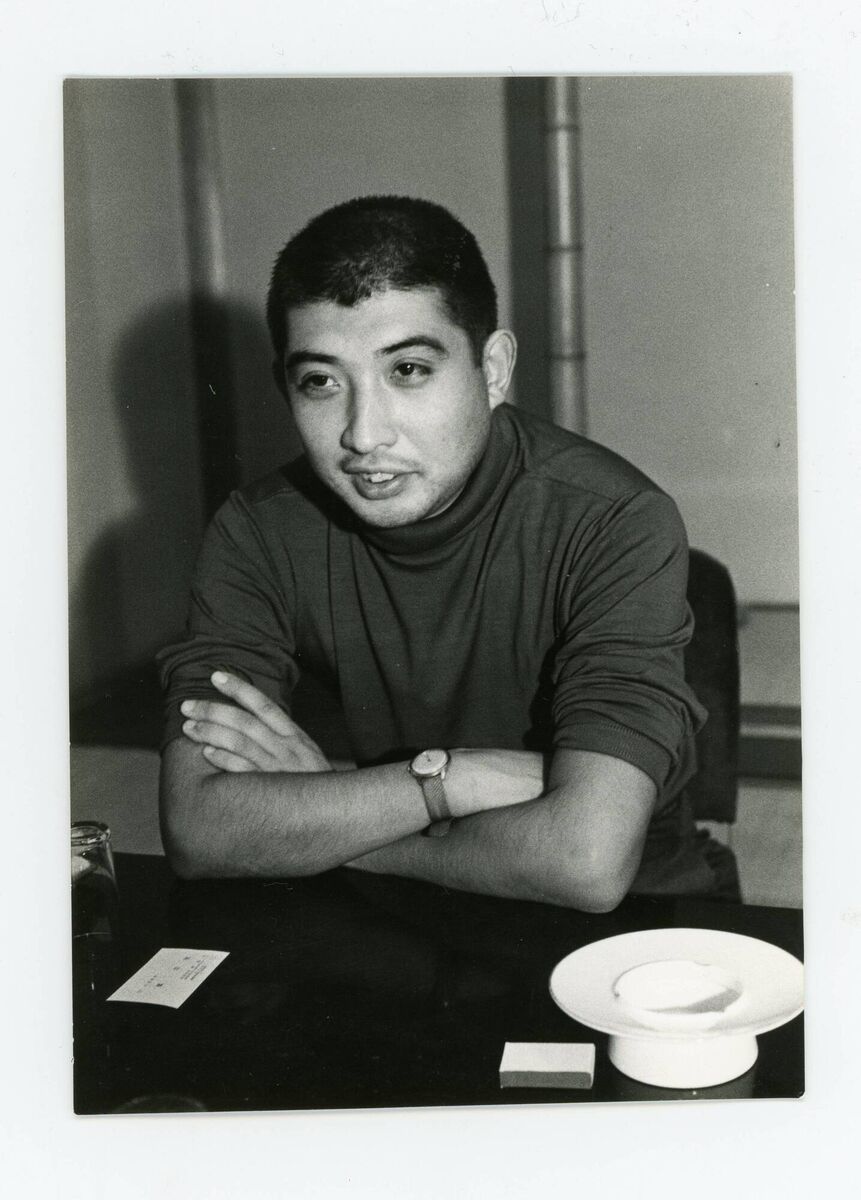
Okamura was just 55 when he passed away in 1985. “Kakuko told us he knew he was going to die in his mid-50s. Not that he was a mystic, but he had diabetes and I don't think he was treating his illness as he could or should have.”
It would surely have pleased Okamura that his images of the Troubles are finally being shown in Ireland, nearly 40 years after his death. The Memories of Others project has also ensured their preservation; Photo Museum Ireland has already acquired the exhibition prints for its permanent collection.
- The Memories of Others is curated by Pauline Vermare, along with Trish Lambe and Brendan Maher of Photo Museum Ireland, and arts writers Seán O’Hagan and Masako Toda. The exhibition is accompanied by a photobook and a short film.
- Akihiko Okamura, The Memories of Others runs at Photo Museum Ireland until July 6, 2024.
- Further information: photomuseumireland.ie


